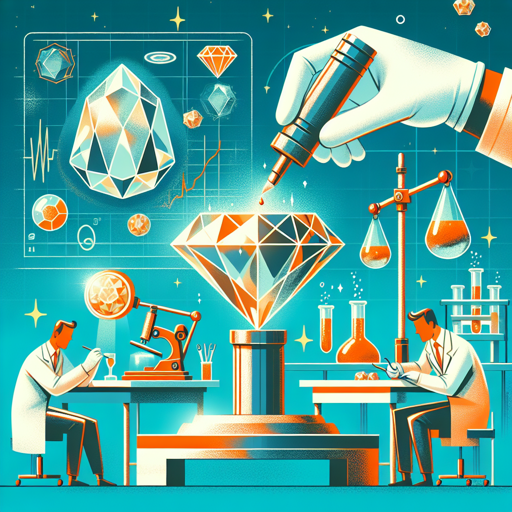Emergence of Lab-Grown Diamonds
Discover the technology behind lab-grown diamonds and why they're gaining popularity.

Introduction
Diamonds have long been revered for their brilliance and rarity. However, with advancements in technology, the emergence of lab-grown diamonds is disrupting the traditional diamond industry. These diamonds, made in laboratories under controlled conditions, are identical to those mined from the earth, both chemically and optically.
The Process of Creating Lab-Grown Diamonds
Lab-grown diamonds are created using two primary methods: High Pressure-High Temperature (HPHT) and Chemical Vapor Deposition (CVD).
High Pressure-High Temperature (HPHT)
HPHT mimics the natural geological conditions that form diamonds in the earth. A carbon source, typically graphite, is placed in a press under high temperatures and pressures. The carbon atoms bond in the diamond crystal structure, creating a lab-grown diamond.
Chemical Vapor Deposition (CVD)
In the CVD process, a diamond seed is placed in a sealed chamber filled with carbon-rich gas. The gas is heated to extreme temperatures, causing the carbon atoms to separate. These atoms then settle on the diamond seed, layer by layer, to grow a diamond.
Here is a simple comparison of the two methods:
| HPHT | CVD | |
|---|---|---|
| Method | Uses pressure and temperature to create diamonds | Uses heat and carbon-rich gas to create diamonds |
| Time Taken | 1-2 days | 2-3 weeks |
| Size of Diamonds Produced | Larger diamonds | Smaller diamonds |
Why Lab-Grown Diamonds are Gaining Popularity
Lab-grown diamonds offer several benefits over their natural counterparts:
- Sustainability: Mining diamonds from the earth can have significant environmental impacts. In contrast, lab-grown diamonds are created without disturbing natural ecosystems.
- Ethics: The diamond industry has been plagued by controversies over ‘blood diamonds’ or diamonds mined in war zones and sold to finance armed conflict. Lab-grown diamonds are conflict-free.
- Price: Lab-grown diamonds are generally less expensive than mined diamonds, making them a more affordable option.
- Quality: Lab-grown diamonds are often of higher quality than mined diamonds as they are created under controlled conditions.
As Jean Cocteau once said, “I love cats because I enjoy my home; and little by little, they become its visible soul.” Similarly, lab-grown diamonds, with their sustainability and ethical benefits, are becoming the visible soul of the gemstone industry.
External Resources
For more information on lab-grown diamonds and their impact on the diamond industry, you can visit Gemological Institute of America (GIA).
Conclusion
The rise of lab-grown diamonds represents a significant shift in the gemstone industry. These diamonds, created with advanced technology, offer a sustainable and ethical alternative to traditional mined diamonds. As technology continues to advance, we can expect to see more disruption in the industry, with lab-grown diamonds leading the way.